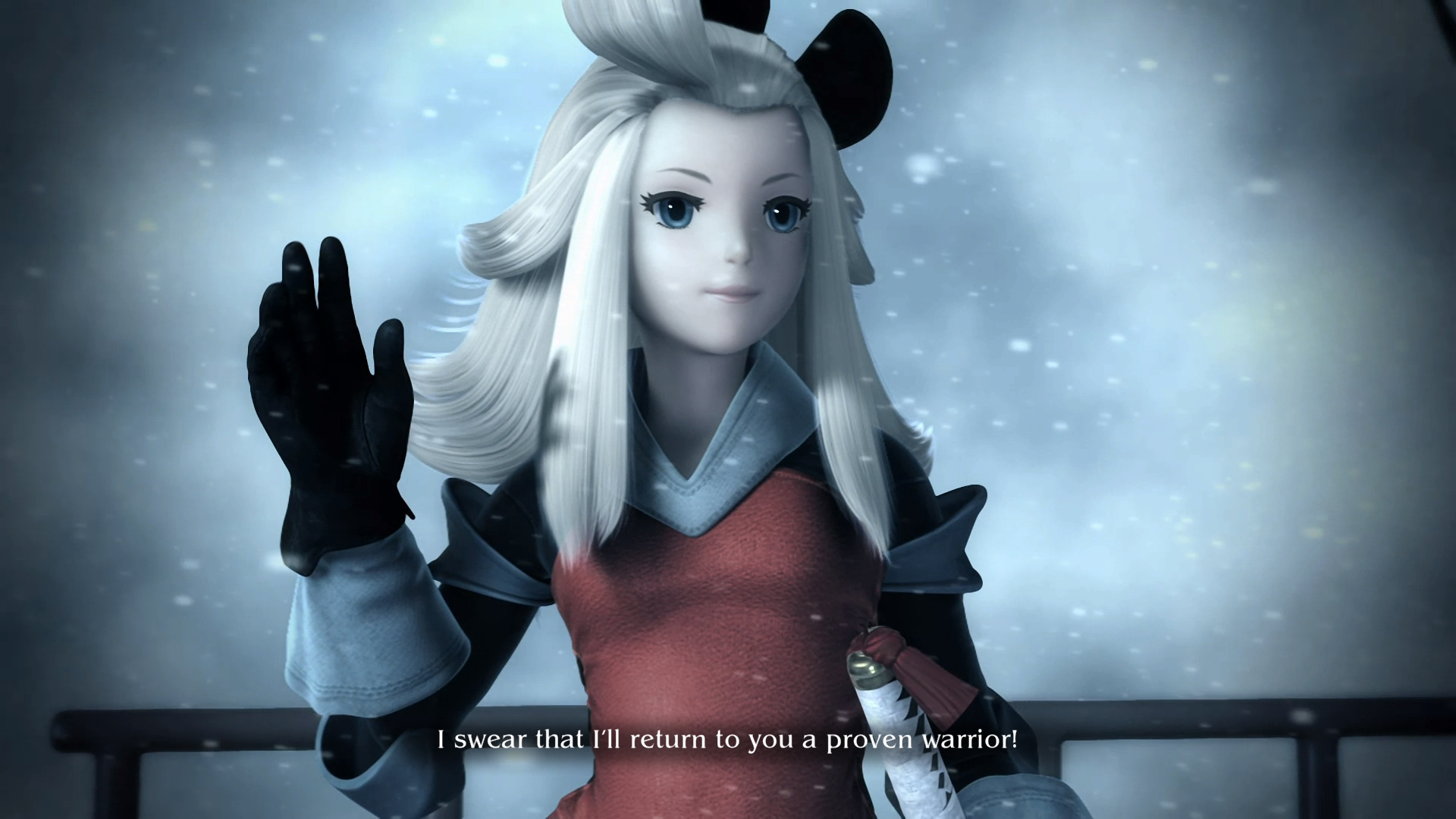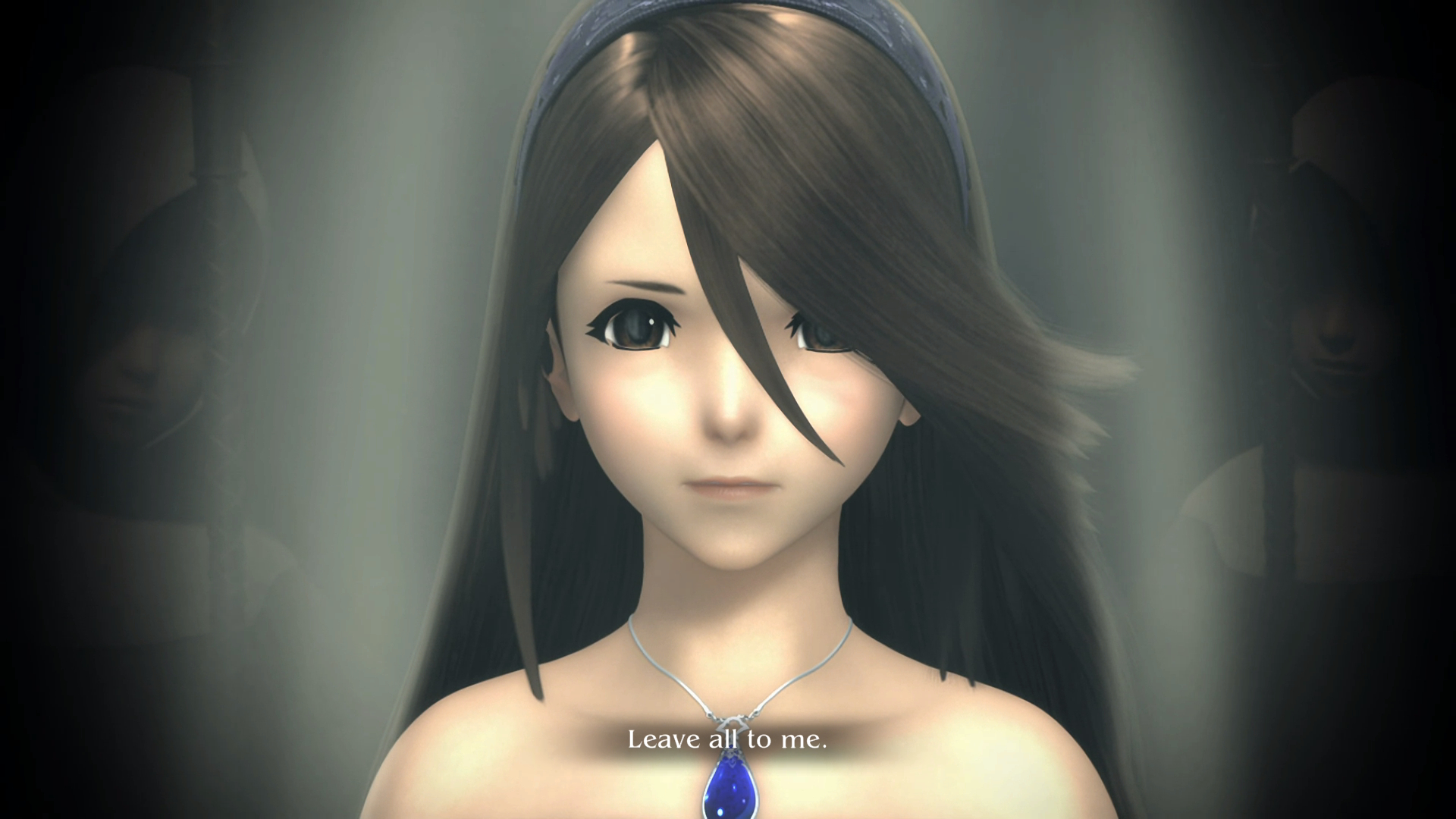TechRadar Verdict
While Bravely Default Flying Fairy HD Remaster will feel incredibly familiar to returning players, this is the perfect way to play an RPG great. One of the best Nintendo 3DS games is back for a new audience to discover, and sometimes knowing when not to change something is an important part of re-releasing an older title. At times, it feels like a lost relic, but I’m glad it’s here again.
Pros
- +
The Brave and Default system brings tension to every battle
- +
A sprawling story that never bores
- +
Still looks great…
Cons
- -
Even if its low-poly 3DS origins are sometimes all-too noticeable
- -
Nintendo Switch 2 gimmicks are forgettable
Why you can trust TechRadar
Bravely Default Flying Fairy HD Remaster is a weird Nintendo Switch 2 launch title, something of a time capsule in every manner the phrase could imply. As a game, it’s stubbornly unchanged, and yet by being so familiar, it remains just as enjoyable as it was on its initial Nintendo 3DS release.
Platform reviewed: Nintendo Switch 2
Available on: Nintendo Switch 2
Release date: June 5, 2025
As the game’s producer Tomoya Asano noted ahead of this remaster’s release, Bravely Default was designed as a throwback to the classic 2D and 16-bit era of RPGs.
Its success both at home and abroad inspired the company to develop its HD-2D titles, such as Octopath Traveler and the Dragon Quest 3 HD-2D Remake. It emulates classic Final Fantasy with a grand globe-trotting adventure to save the world, wonderfully representative of the Nintendo Entertainment System and Super Nintendo Entertainment System eras of the storied franchise.
One day, a great chasm suddenly opens in the earth underneath the village of Norende, with Tiz the sole survivor. The four crystals driving the natural balance of the world have been plunged into darkness. When he runs into one of the Vestals (priestesses of the crystals), Agnes Oblige, he is inspired to protect her and seek a way to reawaken them. Over time, you are joined in your travels by Edea Lee and Ringabel, and these four warriors of light set out to rejuvenate the world.
This is a turn-based RPG, enhanced by a deep job system and much more. The result evolves this basic framework into something highly engaging and, even all these years later, wholly unique. The titular Brave and Default mechanics bring a fascinating risk-reward thrill to difficult combat: you begin with 0 BP in each battle, with any action consuming one point. You can act multiple times in a single term by using Brave, consuming extra BP, but you’ll be unable to act again until you recover to at least zero.
Default is this game’s term for defending: you won’t act, but you’ll gain an extra BP and take less damage, allowing you to act twice next time without skipping a turn. By building up BP across multiple characters and tying it to special moves it allows for some intense all-out attacks if you strategize correctly.
Fairy-ly Strategic

And strategize you must. Success against bosses hinges on correctly utilizing this system, as well as the jobs. These are the various classes you may already be familiar with, such as mages, thieves, and knights, alongside more exotic jobs like merchants.
Sign up for breaking news, reviews, opinion, top tech deals, and more.
Mastery of these classes allows you to inherit some of their abilities to other classes, essentially allowing a character to embody the best of two jobs at once. Battles require not just good strategy but knowing your limits, all while taking advantage of this job system to craft a mage with the speed of a thief, and so on.
One typical frustration when it comes to turn-based RPGs is that combat can soon feel slow or repetitive. These systems combine to avoid that. If you do feel the need to grind to increase your level, earn money, or improve a character’s class proficiency, you can assign actions for characters to take in auto-battles or change encounter rates and battle speed.

After first struggling to beat a boss, stepping back to adjust your jobs and equipment before tackling it with the right balance of offense and defense takes advantage of every aspect of the battle system, and makes victory feel oh-so sweet.
It’s hard to find much to complain about when it comes to Bravely Default Flying Fairy HD Remaster. It was praised in its time for being one of the best RPGs, and that remains true today. The script and characters charm, the battles thrill, just as they did before. Next to nothing has changed.
The character models and world are the same low-polygon 3D models as the 3DS release, bar a few upgraded textures, a fact only more apparent in the models for minor characters or the stiff, limited animations in cutscenes. It’s a testament to the timeless art style of the original game that the towns and select areas remain at times stunning and never feel garish when blown up on a larger screen.
A lingering legacy

The only real differences in Bravely Default Flying Fairy HD Remaster are more of a necessity than anything else: the old game made heavy use of the network features of the 3DS, encouraging players to send combat support to other players while walking out in the world via StreetPass, or linking the abilities of your party with friends. These have been adapted to the Nintendo Switch Online ecosystem somewhat awkwardly, the joy of encountering strangers while walking outside replaced with much less interesting ghosts in towns.
There are two new minigames, but these feel like they exist primarily as an excuse to justify Nintendo Switch 2 exclusivity. They each use mouse controls, but not very effectively. Luxencheer Rhythm Catch is a rhythm game timed to a few iconic songs from the game’s soundtrack while a character of your choice dances along. It’s serviceable, but doesn't feel as natural as a proper rhythm game should.
Ringabel’s Panic Cruise is easily the more involved and interesting of the pair, putting you behind the controls of an airship as you steer around a course and react to commands by pulling switches and knobs or blowing whistles. I could imagine myself enjoying a full game with this concept and controls, but here it feels like little more than a tech demo. With both hidden in submenus, these will be forgotten almost immediately.

Take these minimal bonus features away, and this is almost exactly the same game as it was before. Excluding a few quality of life changes and an adaptation from a two-screen handheld to a single-screen hybrid console, this is identical to the original release. Often, titles like Bravely Default may receive a new translation ahead of a new release, but even that remains unchanged here.
This, at least for me, is fine. In retaining as much of this 3DS experience as possible, Bravely Default Flying Fairy HD Remaster stands apart from its contemporaries as something unlike other RPGs on the market right now, faithfully making a classic of the genre accessible to a new generation.
While it’s a tough sell to those who played the original game upon its release due to the unchanged nature of this story and gameplay, I’ve personally enjoyed the excuse to revisit it, exactly as I remember.
For all it isn’t pushing the new hardware to the limits while the limited new features are more of an excuse and obligation to test new hardware than enhance the experience, it’s hard to complain when you have one of the best RPGs of the last 15 years on the largest or smallest screen you could desire.
Should I play Bravely Default Flying Fairy HD Remaster?

Play it if...
You never tried the original game
An adventure inspired by the classics but updated into something singular, Bravely Default is still not only timeless, it’s one of the best RPGs of the past 15 years
You love to strategize
No matter your level or job, an overly offensive or poorly strategized boss fight can leave you vulnerable to defeat in any fight. You’re always on your toes in your journey to save the world.
Characters and story drive your play
Bravely Default has such a charming core cast of characters whose chemistry will leave you laughing from the moment you meet. Their jokes and spirit alone can keep the adventure going.
Don't play it if...
You’re a returning player wanting something new
There’s nothing here you haven’t seen before if you played the original game. While Bravely Default is an enjoyable enough experience worth replaying, don’t come expecting a new perspective on this classic.
You want to push your new Switch 2 to the limits
This is a Nintendo 3DS game at its core, and the title has been given minimal visual upgrades. New content is limited to two minigames. This won’t test the power of the device or push all the new features of Nintendo Switch 2.
Accessibility features
While it’s possible to adjust language and subtitle options in Bravely Default Flying Fairy HD Remaster, and there is hardware-level limited button remapping for those using the Switch 2 Charging Grip or Pro Controller, there are no other accessibility features for those needing features such as colorblind mode.
How I reviewed Bravely Default Flying Fairy HD Remaster
I played 20 hours of Bravely Default Flying Fairy HD Remaster and tried all features, including town rebuilding and bonus minigames.
This brought me partway into the second chapter of the game, although I did complete the game upon its initial release on Nintendo 3DS and compared the experience between the two titles.
Much of the game was played on a Nintendo Switch 2 in handheld or tabletop mode, as well as on an ASUS VG27AQL1A gaming monitor. Audio was utilized in a mix of the system’s internal speakers, Apple AirPods Max connected wirelessly to the device, as well as Denon speakers connected to the monitor via a Yamaha A-S301 Amplifier.
First reviewed June 2025
Alicia is a freelance journalist based in Japan writing regularly for TechRadar Gaming. They’ve handled features, reviews, and more about film, TV, anime, gaming, and more with a specialty on Japan, publishing for outlets like Crunchyroll, GamesRadar, UploadVR, gamesindustry.biz, and more. After a degree studying Japanese at Durham University, they moved to Japan in 2022 where they’ve been living the high life in Tokyo ever since. When they’re not lost in the swirling metropolis they’re writing about games and their experiences in the country, providing their unique perspective from the ground.
Beyond work, they love to take in art and culture by attending exhibitions, watching movies, meeting friends for alcohol and karaoke, or going to the theater multiple times a month to watch musicals including the all-female Japanese theater troupe Takarazuka Revue. These cross-cultural experiences have intensely shaped their worldview, having just as much of an impact on their judgment of the latest games and tech as the experiences that first made them interested in moving to their new home: Kingdom Hearts, NieR, and other Japanese RPGs, as well as adorable anime girls.
You must confirm your public display name before commenting
Please logout and then login again, you will then be prompted to enter your display name.
